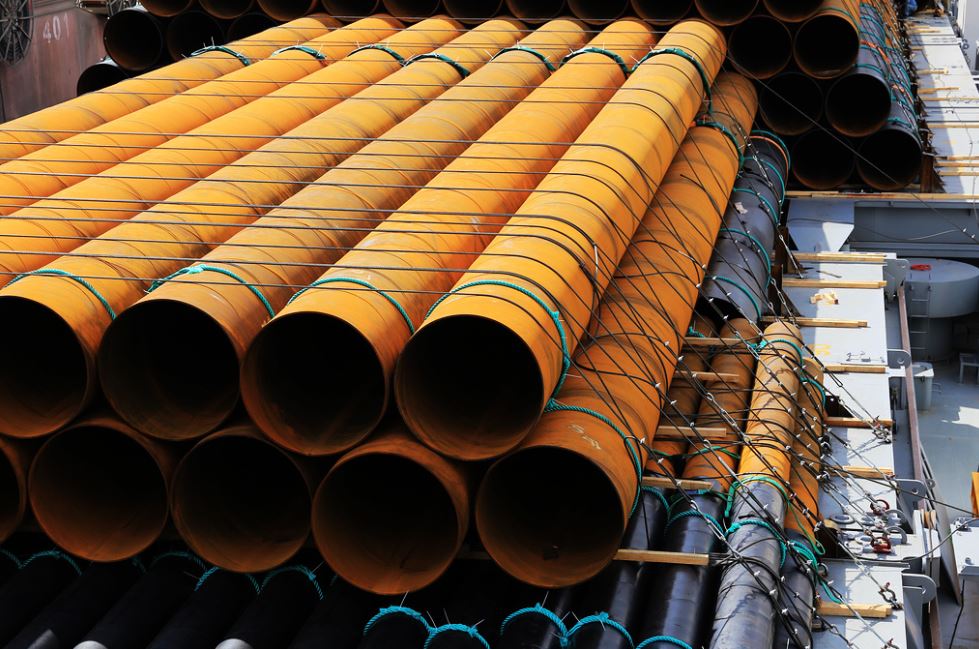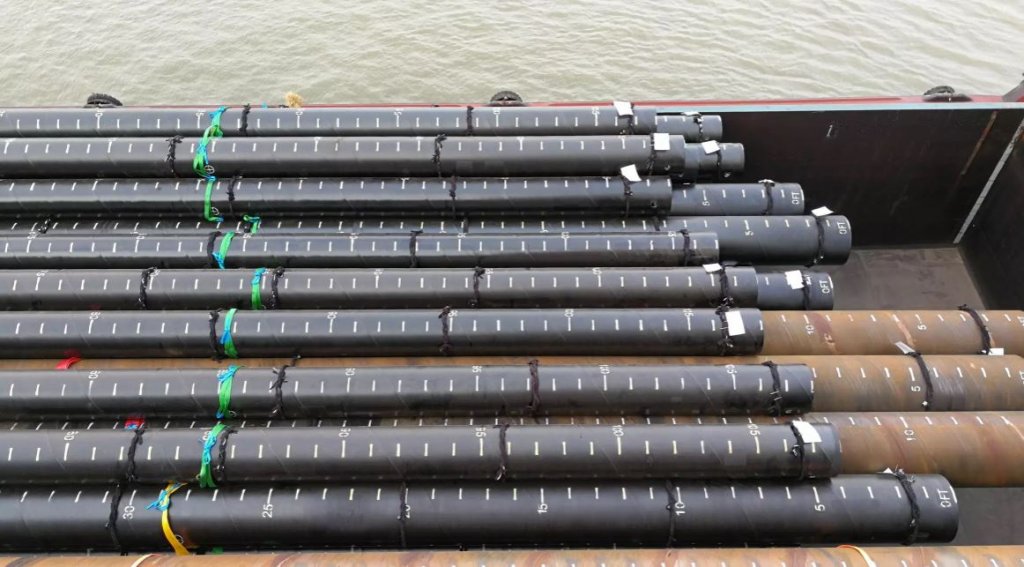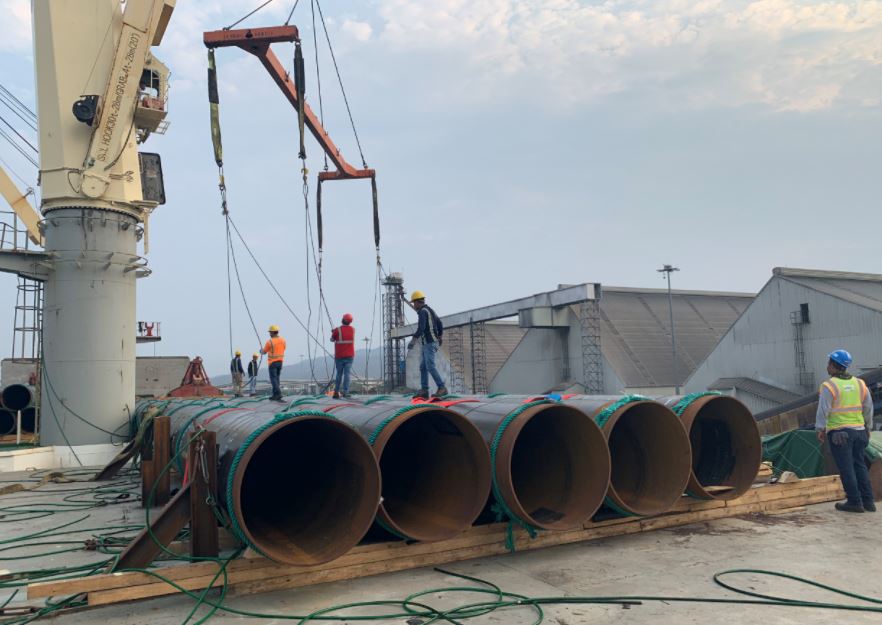Here, ESC Steel answers all your frequently asked questions about Steel Pipe Piles.
What type and grade of steel pipe are used for piling works?

ASTM-A252 is the basic specification governing seamless and welded steel pipes used for piling purposes. They can be utilized as a load bearing pile or as concrete pile encasement. A-252 pipes has three grades: Grade 1 (minimum yield strength of 30 ksi or 207 MPa); Grade 2 (minimum yield of 35 ksi or 241 MPa); and Grade 3 (minimum yield of 45 ksi or 310 MPa).
The strongest- Grade 3 is usually the preferred grade for piling works.
What is a friction pile?
A friction pile draws strength and stability from its adhesion to the mounting soil. Friction piles are also called floating piles as they are not anchored in rock layer or hard strata. These piles transmit loads from and throughout their full driven height and entire cylindrical surface, to the ground, by friction. They are suitable where harder soil layers are very deep and are not economical or practical to reach.
What is an end-bearing pile?
End-bearing pile has bottom end anchored into a layer of rock or very dense soil. Their load-bearing capacity is mostly developed at pile toe. Unlike the friction pile, these piles transfers loads ultimately to the stable strata where it rests, bypassing the upper softer soil layers. They act no less than columns. End-bearing piles are used to support larger and heavy structures.
What is “plugging” and how to avoid it?
During pile driving of open-end pipes, a soil column is formed inside the pile. As the pile progresses deeper, the soil cylinder also produces sufficient resistance that prevents further soil intrusion and the pipe pile becomes “plugged”.
Soil plugs can be removed periodically by drilling or airlift to aid driving. Otherwise, removal is not necessary especially when the pile will not be filled with concrete, sand, or grout. Without removal of the plug, it can still be filled or grouted unless it is not permitted by the design. Soil plugs make the pipe pile act like a closed-end pile and this has been a critical area of concern.

What is the purpose of open-end pipe piles? When are they used?
Open-ended pipe piles are used when obstructions such as material fragments, small boulders, and rock layers are expected. Open-ended pipes are usually fitted with special driving shoes to increase its toe capacity against stress and damage. Soil plugs develop in open-end pipe piles but as long as they don’t generate problems during pile driving, they are not required to be removed.
Open-ended pipe piles are largely used in land and offshore structures like oil and gas platforms and wind turbines. They are basically employed where there is a need of resistance to horizontal loads and bending moments such as strong winds, tidal and vessel impact. Because of their constant radius of gyration, pipe piles should be considered where freestanding columnar strength is important such as in jetties and berths.
What is the purpose of closed-end pipe pile? When are they used?
When bearing capacity from the entire pile toe is required, piles are closed with either a flat plate or a conical tip. Close-ended pipe piles behave as displacement piles but also functions well as friction piles particularly in loose sands. Whether driven open or close-ended, pipe piles can still be employed as a high-capacity end-bearing pile.
When pipe piles are driven into soft, obstacle-free materials, the end closure can be simply a fabricated flat plate welded to the pile tip. But in cases of penetrating soil layers with rocks or boulders, conical pointed tips are recommended. The 60 degrees conical point brings the reaction force to the centroid of the pile and deals with obstructions or hard strata at right angles. The pointed tip basically provides dependable protection to the pile toe against distortion in difficult driving scenarios.

What kind of pile should I use for my project?
Kindly contact ESC Group and provide your project information. We offer you the most professional assistance in choosing the best material base on all technical aspects including cost considerations. ESC can supply pipes between 21mm up to 4267mm in diameter at thicknesses between 2.1mm up to 100mm. These include LSAW pipe, SSAW spiral pipe, and ERW pipe, in a wide range of steel grades. ESC has delivered many thousands of tons of pipe piling around the world.
Source breakbulk.news




.jpg)






